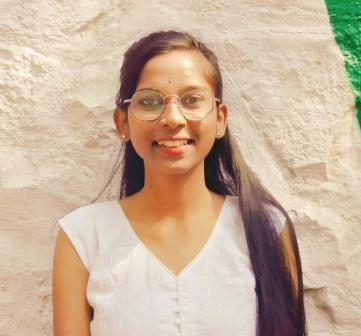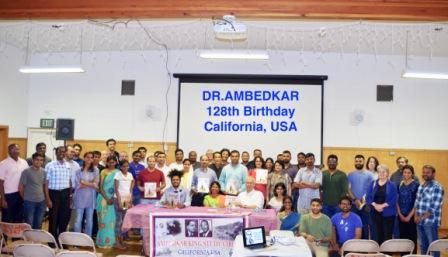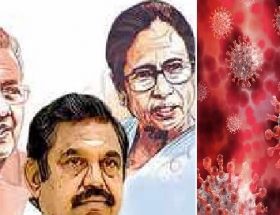Aachal Wasnik
Introduction
The Tata Institute of Social Sciences (TISS) in Mumbai is known for its excellence in social science and research. However, for students belonging to marginalized communities, the experience of campus life can be quite different. The institute is considered an elite institute, and students coming from rural or lower socio-economic backgrounds often face several challenges while adjusting to campus life. This article aims to shed light on some of the major challenges faced by students belonging to marginalized communities, particularly Dalits and Adivasis, at TISS, and how these challenges have been exacerbated by the shift to online education during the COVID-19 pandemic; how students from marginalized communities adjusted to the fancy atmosphere of campus with their caste identity after coming back to campus. It is focused on lived experiences, which will help you understand the struggles of students from online to offline mode with their caste identities; within that, how caste plays an important role in the lives of marginalized students and how they cope with the mental stress.
The article will also highlight the unique experiences of students who have taken deferment during the COVID-19 pandemic and the difficulties they face in adjusting to the new batch. The article will present ways to address these challenges and provide recommendations for creating a more inclusive and supportive educational environment. The author can provide a more nuanced understanding of the experiences of marginalized students, and how they navigate challenges related to their social identities and cultural capital. Also, the article will shed light on systematic oppression, including caste, class, and gender.
Online Education during COVID-19
The shift to an online mode of education was sudden and challenging for all students, particularly those who came from rural or economically disadvantaged backgrounds. The shift from offline to online education was necessitated by the COVID-19 pandemic and the associated lockdowns and social distancing measures that were implemented worldwide in an effort to curb the spread of the virus. This resulted in schools, colleges, and universities closing down and students being unable to attend in-person classes. To continue education, institutions moved their classes online and used various virtual platforms and tools to conduct classes and assessments. The widespread adoption of online education during the pandemic was a sudden change, and it remains to be seen how the education sector will evolve in the post-pandemic world, but there were so many students from marginalized sections of Indian society, mostly from rural areas, who became victims of online education.
The major challenges they faced during online education were
Internet Problems: Access to stable and fast internet became a major issue for students from rural areas. The slow internet speed and frequent disconnections made it difficult for students to attend online classes and complete assignments on time. Again, when it comes to accessibility, there is an unequal distribution of marginalized students.
Adapting to Technology: The use of technology in online education was a new experience for many students, particularly those who came from economically disadvantaged backgrounds. They had to quickly adapt to new software, platforms, and tools, which was a challenge in itself. While other students were familiar with technology from prior educational backgrounds, they completed their work and were always the center of whole class activities, while students from various marginalized backgrounds were stuck in the process of class activities.
Group Assignments: Group assignments, presentations, and online discussions were a major part of online education. However, in most cases, two or three dominant students took the lead, leaving the unheard voices of marginalized, non-English-speaking students behind.
Language Barrier: One of the major challenges faced by students belonging to marginalized communities is the language barrier. Many of these students come from rural areas where the medium of instruction is not English, and they may not be fluent in the language. This can lead to difficulties in understanding lectures, participating in class discussions, and working on group assignments. This language barrier also affects the student’s confidence and self-esteem, as they may feel inferior to their peers who are fluent in English. The situation has become even more challenging with the shift to online education, where students are expected to participate in discussions and complete group assignments, which can be difficult for those who are not fluent in English. The online mode of education also posed a challenge in terms of time management. The students had to balance their studies with their personal lives, leading to a stressful and hectic routine. The multiple deadlines for assignments added to their stress levels, making it difficult for them to manage their time efficiently.
Discrimination & Humiliation: Another challenge faced by students belonging to marginalized communities is the sense of discrimination, lowliness, and stress they experience in the institute. The institute, being an elite institute, is dominated by students coming from upper-caste and economically well-off backgrounds. This can lead to a sense of discrimination and lowliness among students belonging to marginalized communities, who may feel that they do not belong in the institute. The situation has become even more stressful for these students during the Covid-19 pandemic, as the shift to online education has made it harder for them to connect with their peers and build supportive relationships as students are not able to interact with each other in person and may feel even more isolated and excluded.
Lack of Participation & Contribution: The interaction between students with ground knowledge and those with fluent English is another major challenge faced by marginalized students in TISS. Students who come from rural areas and have lived experiences often have a wealth of knowledge and are able to relate practical and lived experiences to their peers. However, this knowledge and experience may not be valued as highly as the fluency in English and the knowledge of theoretical concepts held by students coming from economically well-off and educated backgrounds. This can lead to conflicts between the two groups of students, and marginalized students may feel that their voices are not being heard. The situation has become even more challenging with the shift to online education, where students are expected to participate in discussions and complete group assignments, but marginalized students may feel that their contributions are not being valued.
Offline Education after COVID-19
With the easing of the pandemic situation, the institute shifted to an offline mode of education. However, this mode of education also posed its own set of challenges. Offline education was more task-centric, leading to a hectic routine for students. The students also had to adapt to the new mode of education, which was a challenging task.
The students who had to take deferments during the pandemic found it difficult to fit in with their batchmates when they returned to campus. They were treated as outsiders and often faced conflict with their batchmates. The students who took deferment also found it difficult to catch up with the coursework and felt left behind.
Time Management: Balancing academic, personal, and professional commitments became difficult with the added pressure of multiple assignment deadlines. Furthermore, the curriculum is difficult to understand, especially for non-English-speaking students, so it takes a long time for them to understand the context, theories, and practices, and deadlines are always more difficult for them, adding extra burden and stress to their academic lives, which directly affect their mental health.
Discriminatory Attitudes: The students who came from marginalized communities faced a sense of discrimination, lowliness, and stress on campus. The elite students often held discriminatory attitudes towards their peers from lower backgrounds, leading to a sense of exclusion and insecurity in the dining hall of the college, when students from the lower caste don’t want to sit with them. It is not appropriate for upper caste students to sit at the same table with lower caste students for meals or to hang out because they have already formed their groups based on classes. This is a daily struggle that lower caste students must endure on campus.
Deferment and non-deferment batches: The students who took deferment during the pandemic and joined the next batch faced difficulties in adapting to their new environment. They were often treated as outsiders and faced conflict with some of their batchmates. The non-deferment batch sometimes excluded them; again, how they accept reality varies from person to person. In the back of their minds, these students feel burdened because of their lack of bonding.
My personal experiences: Before the pandemic, I was already having difficulties adapting to the life of TISS as someone coming from a semi-urban background and belonging to a social identity the impact of which on my personal life at I didn’t know earlier. I struggled with so many challenges and often felt like an outsider compared to my classmates, who had more exposure and were more familiar with the academic and cultural norms of the institute. This experience of social exclusion was further amplified during the shift to online education. The lack of physical interaction and the dependence on technology only exacerbated the language barriers, and group assignments became a source of conflict as I struggled to adapt to the new mode of learning. When you first returned to campus, how did you get to know people and trust them? How did the perception of roommates towards you and other people change after revealing your caste? They treated me as if I wasn’t actually being taught here after I revealed my caste, throwing insults and making me feel vulnerable, so it’s clear discrimination because of my identity and not on the basis of potential. Even if you are from a lower caste and are good at your position, many people will still look down on you because of your caste identity. And if you come from an upper caste family, until their perception changes, they will only look at you with respect. People need to understand the differences between peripheralization and marginalization. People always have a narrative: the lower caste is always poor; they lack knowledge; they are lazy; they are marginalized; but if that is the case, someone who becomes an IAS from the lower caste is wealthy, knowledgeable, and intelligent, but his caste identity has always haunted him. He is always recognized by his caste.
In my experience, this was evident in my life at TISS, where I felt excluded and discriminated against due to my social identity. I was confronted with new challenges in the context of academia when I came to campus. The new curriculum was more task-centric and focused on meeting multiple deadlines, which put me under immense stress and made it difficult for me to balance my studies with my personal life. Additionally, the lack of physical interaction and the persistence of casteist politics at the institute made it difficult for me to fully integrate into campus life and made me feel like my caste identity was most important for people to recognize me as a marginalized student.
First, it is important to understand the concept of social identity. According to social identity theory, individuals categorize themselves and others based on shared characteristics, such as race, gender, and socio-economic status. This categorization shapes one’s self-concept and perception of others, leading to in-group favoritism and out-group discrimination. In the context of the Tata Institute, students from lower castes and rural backgrounds may face discrimination and exclusion from their peers, who come from more privileged backgrounds.
Next, cultural capital theory sheds light on how cultural resources and knowledge play a significant role in an individual’s ability to navigate and succeed in educational and social systems. In the case of the Tata Institute, students from privileged backgrounds may have an advantage due to their access to cultural capital, such as English proficiency, access to technology, and exposure to different cultures. On the other hand, students from marginalized backgrounds may struggle to adjust to the cultural norms and expectations of the institute, leading to feelings of inadequacy and exclusion.
Finally, social exclusion theory highlights the ways in which individuals and groups are excluded from social and economic opportunities and resources. This exclusion can be both structural, such as in the case of systemic discrimination and bias, and behavioral, through intentional or unintentional exclusion from social networks and activities. In the context of the Tata Institute, marginalized students may face exclusion both in the academic realm, through their experiences in the classroom and group assignments, and in the social realm, through exclusion from social events and opportunities for leadership and growth.
Present/contemporary context: New Education Policy (NEP 2020)
Access to education: The policy aims to provide universal access to quality education for all children, particularly those living in rural and underprivileged areas, which is nearly impossible given that India has an 833 million rural population, according to the 2011 census, where most marginalized groups live and struggle to access quality education.
Mother tongue-based education: The policy emphasizes the use of the mother tongue or regional language as the medium of instruction in schools, especially in the early years. After completing schooling people struggled for language because higher education has compulsory English language, and again students who came from marginalized sections who completed their education in their mother tongue And after coming to campuses they struggled for the language capital, in institutions like TISS, JNU, etc.
Technology-assisted education: While the use of technology and digital tools in education is encouraged in order to make learning more accessible and engaging for city students who have attended elite institutes since childhood, it is a difficult task for rural students because the education system fails to provide quality education when someone does not have access to technology. The other drawback is the low connectivity of the internet in remote areas, which makes it difficult for students to attend classes.
Unequal distribution of resources: While comparing the education of rural and urban areas, there will always be a huge gap in the unequal access and distribution of resources, from infrastructure, teachers, and technology to funds for educational development in rural areas. This unequal distribution directly affects the quality of education for rural students. The reason for the deprivation of rural students in education is the unequal distribution of resources.
Gender Differentiation: In most families, smartphones were only given to the sons of the household. The distinction between males and girls in our nation is another negative. Only 28% of the 733 students in the government schools in Bihar have smartphones, compared to 36% of the boys, according to a recent poll. Furthermore, these smartphones belonged to men most of the time; girls had less access to them than boys. And, it was discovered that girls spent more time than guys doing housework, and because of that they were deprived of education.
Democratic space: As educational institutions aim to provide democratic spaces to individuals for their personal growth and development, the changing mode of education from in-person to digital robs the students coming from marginalized communities to claim these spaces. Since access itself becomes a major issue, the absence of marginalized students from classroom participation leads to the impartment and flow of one particular set of thoughts, ideas, and opinions in the classroom.
Conclusion
However, despite these challenges, there are steps that can be taken to address the experiences of marginalized students and create a more inclusive campus environment. For instance, the institute can provide resources such as language classes and technical support to bridge the gap between students from different backgrounds. Additionally, group assignments can be structured in a way that promotes equal participation and representation from all members, and social events can be inclusive of diverse perspectives and experiences.
In conclusion, the campus life experience at the Tata Institute of Social Sciences can be vastly different for students from marginalized backgrounds, due to the intersection of social identity, cultural capital, and social exclusion. While these challenges may seem overwhelming, it is crucial for the institute to take proactive steps toward creating a more inclusive environment for all students. By doing so, the institute can fulfill its mission of promoting social justice and equity, and help marginalized students achieve their full potential in their academic and personal lives. On the policy level, it’s necessary to consider marginalized sections of society whenever it comes to education because Dr. Ambedkar stated that “Cultivation of mind should be the ultimate aim of human existence,” which is only possible when each and every student gets quality education. I wanted to make it clear that if marginalized communities experienced issues with education, it was not their fault; the family’s socioeconomic situation prevented them from affording education. Once more, why are they unable to afford education due to institutionalized segregation? In the Indian caste system, the three factors of class, caste, and gender are crucial. How can someone from a lower caste or class pay tuition and private school fees for their children’s education when the majority of rural households support their families by farming and earning daily wages? However, when we visited government schools in rural India, the situation was far worse because there was a lack of proper infrastructure, resources, and teachers. Why then does a weaker segment of society usually end up suffering harm? Because of this institutional murder rate increasing in various elite institutes and the long-term effects it has on students’ lives, one student commits suicide every half-hour. Is this systematic oppression caused by India’s educational system and structural system to blame for this increase in institutional murder in India?
~~~
Aachal Wasnik is currently pursuing Master’s in Social Work, from Tata Institute of Social Sciences, Mumbai. She is interested in writing about marginalized communities, unheard voices.










